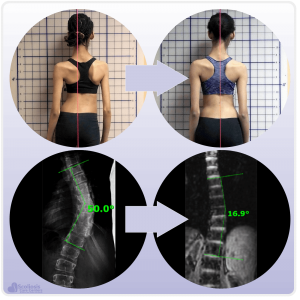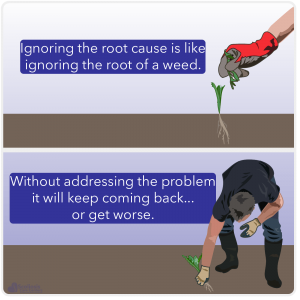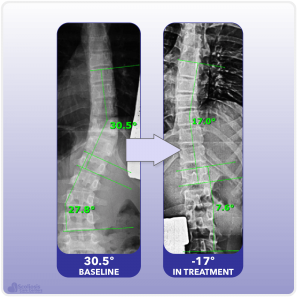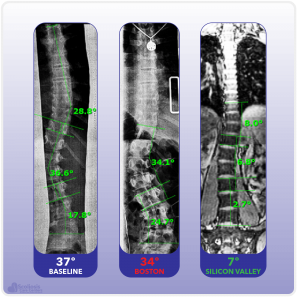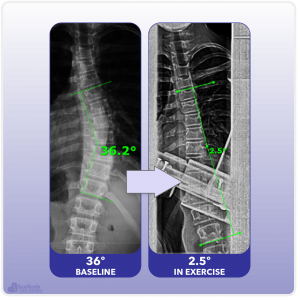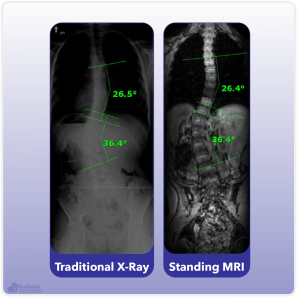The Silicon Valley Scoliosis Method
The Silicon Valley Scoliosis Method is a completely new way of thinking about scoliosis
A young child with a 30 degree curve has a 95% chance of needing surgery by the time they grow up 9. In contrast, the Silicon Valley Scoliosis Method has a 100% success rate for preventing surgery in curves 30 and under. Not only can it eliminate the need for surgery, it can make the spine grow straighter.
Don’t just prevent surgery for your child: redefine success and create your own scoliosis success story. The Silicon Valley Method help you to:
- Prevent surgery
- Improve posture
- Reduce rib hump
- Reduce rotation
- Reduce curve size (Cobb angle)
Supported by scientific and medical literature, the Silicon Valley Scoliosis Method gives you every tool you need to achieve these ambitious goals.
We believe treatment success isn’t just avoiding surgery, but making the spine as straight as it can be as your child grows; providing them with a happy healthy adulthood that isn’t limited by surgical hardware or a large scoliosis curve.
Learn How We Achieve Our Amazing Results

1. Treat the root cause
If your child has been diagnosed with scoliosis, chances are your doctors diagnosed it as idiopathic. Idiopathic means that the cause it not known, and most doctors treat idiopathic scoliosis like we can NEVER know the cause, and because of this are powerless to stop it. This is dangerous because if we ignore the cause, the driving force making the curve worse is left unchecked. Ignoring the cause is a recipe for disaster as the curve gets worse with growth. Why is only the symptom being treated? What if we could treat the cause?
The Silicon Valley Scoliosis Method effectively treats the root cause of most idiopathic scoliosis curves eliminating the driving force that makes a curve grow in size as a child grows. By treating the root cause we give the spine a better chance to grow straight, and allow every part of the Silicon Valley Scoliosis Method to be more effective at straightening the spine. This is one reason why we are able to prevent surgery 100% of the time for curves 30 degrees and under.
2. Release contractures
During every spinal fusion surgery to treat scoliosis surgeons have to “release contractures”. Contractures are ligaments, muscles, and tissues that have become stiff from not being moved through their normal range of motion due to the spine being stuck in a curved position. To “release” contractures, surgeons must cut them out, destroying the tissue. If a surgeon needs to cut out contractures to be able to straighten the spine surgically, imagine how contractures would affect and limit trying to straighten the spine non-surgically.
What if you could release contractures without surgery? This is actually done routinely for other joints like the elbow and knee, but no tool existed to treat contractures in the spine. It was for this reason that we started a FDA registered medical device company and designed a device to treat contractures in the spine non-surgically. By treating and releasing contractures, we liberate the spine from its “stuck” position and enable every other part of the Silicon Valley Scoliosis Method to straighten the spine even more, improving your child’s success.
3. Bracing reinvented
Traditional scoliosis treatment uses a brace to hold the spine where it is. This is wrong. To ensure treatment success, science shows that how straight the spine is in the brace is key. Yet most braces for scoliosis simply hold the spine where it is, or provide poor in-brace correction. Quite often the brace is designed remotely: the designer never meets the patient or knows their case, and designs the brace from a scan someone else performed.
A child is constantly growing, and so your child’s brace is continuously improved to ensure even as your child grows it is straightening their spine as much as possible. Bracing reinvented means that every aspect of the bracing process is designed for your child’s body and curve from the ground up. From the initial scan for the brace, to the design itself, and even the continual improvements made to the brace, every step is done by the same doctor who works with your child ensuring it is as comfortable and effective as it can be. Coupled with treating the root cause and contractures as part of the Silicon Valley Scoliosis Method, the brace straightens the spine ensuring your scoliosis story is as successful as it can be.Learn how we brace differently
4. Strengthen the spine
The Silicon Valley Scoliosis Method uses a variety of traditional and innovative exercises designed so that anyone can do them correctly and safely by themselves. These exercises help straighten every curve in a child’s spine, while helping to strengthen the heart, lungs, and supporting muscles of the spine to enhance your treatment result. These exercises allow the Silicon Valley Scoliosis Method to not only treat your child’s curve, but prepare their body and spine for a healthy adulthood once the brace comes off.
One common fear of using a brace to treat a curve is that the spine and body will weaken during bracing; causing reduced heart and lung function and other issues. It is very common for a brace to be prescribed without any exercises, despite the fact that research shows exercise to enhance bracing results. Even when exercises are prescribed exercises can be tedious and difficult to do on your own, and doing the wrong exercise can even make a curve worse.
5. MRI Guided treatment
For a very long time scoliosis was essentially treated blind. If the effectiveness of a treatment needs to be evaluated by looking at the spine, but to do so requires the use of x-ray, yet using x-ray exposes the child to harmful radiation, the only solution is to limit the use of x-ray. Because x-ray use is limited, the spine can only be looked at once or twice a year effectively making treatment blind. It’s difficult to solve a problem when you can only look at it twice a year.
The Silicon Valley Scoliosis Method solves this problem by using standing MRI to look at the spine, eliminating all radiation completely and enabling us to check the spine as often as we need. This allows us to refine and improve every part of treatment to ensure the spine is as straight as it can be every step of the way. This revolutionary way to look at the spine and its ability to guide every other part of the Silicon Valley Scoliosis Method is crucial to the 100% success rate we have in preventing surgery for curves 30 degrees and under.
See Our Results and How Yours Can Last A Lifetime
Learn About The Science Behind The Silicon Valley Method
Want To Learn More?
Knowledge is power, and good information supported by scientific research is key to success. It is for this reason that we regularly publish articles on our educational blog addressing common questions and topics about idiopathic scoliosis, its causes, and its treatments with information pulled directly from peer-reviewed scientific publications. It is always important that your treatment provider bases everything they do on current research so that you can rest easy knowing your treatment is based on real science and evidence.
Take chiropractic care for example. While it can certainly be useful to reduce pain in some cases there is no evidence that it can help fix a scoliosis curve, especially in young growing children. Scoliosis has been found to have multiple genetic risk factors, including some related to nervous system development. However, to date no single gene or functional group has been shown to be the cause of idiopathic scoliosis and so the disease continues to be known as multifactorial: having many contributing factors.
Scientific research has provided us with invaluable information about how scoliosis worsens both with and without treatment, including how a curve can still progress after surgery. While treating a curve in a growing child without a brace was found to be unethical, you don’t need to wait until a curve appears to treat and prevent it. With good screening practices and frequent observation of small curves, we can detect the moment things begin to get worse and intervene as soon as possible. This early intervention drastically changes the outcome compared to if we had waited until the curve became large and structural changes in the spine have had time to occur.
If you have any additional questions or need any additional information that isn’t found here or on our other educational pages and resources, feel free to contact us and we will be happy to help. After all, making good well informed decisions requires good accurate information supported by science.
References
- Roth M. Idiopathic scoliosis caused by a short spinal cord. Acta Radiol Diagn (Stockh) 1968;7:257–71.
- Roth M. Neurovertebral and Osteoneural Growth Relations, A concept of normal and pathological development of the skeleton. Univerzita J.E. Purkyne, Brno: Radiodiagnositic Clinic, Medical Faculty, 1985. 101 p.
- Roth M. Morphology and development of the spine: Plea for a doubt. Rivista di Neuroradiologia 1998;11:313–20.
- Roth M. Idiopathic scoliosis from the point of view of the neuroradiologist. Neuroradiology 1981;21:133–8.
- Burwell RG, Clark EM, Dangerfield PH, Moulton A. Adolescent idiopathic scoliosis (AIS): a multifactorial cascade concept for pathogenesis and embryonic origin. Scoliosis Spinal Disord 2016;11:8.
- Mehta MH. Growth as a corrective force in the early treatment of progressive infantile scoliosis. J Bone Joint Surg Br 2005;87:1237–47.
- Weinstein SL, Dolan LA, Wright JG, Dobbs MB. Effects of bracing in adolescents with idiopathic scoliosis. N Engl J Med 2013;369:1512–21.
- Aulisa AG, Guzzanti V, Falciglia F, Galli M, Pizzetti P, Aulisa L. Curve progression after long-term brace treatment in adolescent idiopathic scoliosis, Comparative results between over and under 30 Cobb degrees – SOSORT 2017 award winner. Scoliosis Spinal Disord 2017;12:36.
- Dolan, Lori A.; Weinstein, Stuart L.; Abel, Mark F.; Bosch, Patrick P.; Dobbs, Matthew B.; Farber, Tyler O. et al. (2019): Bracing in Adolescent Idiopathic Scoliosis Trial (BrAIST). Development and Validation of a Prognostic Model in Untreated Adolescent Idiopathic Scoliosis Using the Simplified Skeletal Maturity System. In Spine deformity 7 (6), 890-898.e4.
Written and reviewed for scientific and factual accuracy by Dr. Austin Jelcick, PhD and Dr. Matthew Janzen, DC. Last reviewed/edited on March 4, 2024. First published June 22, 2018.

